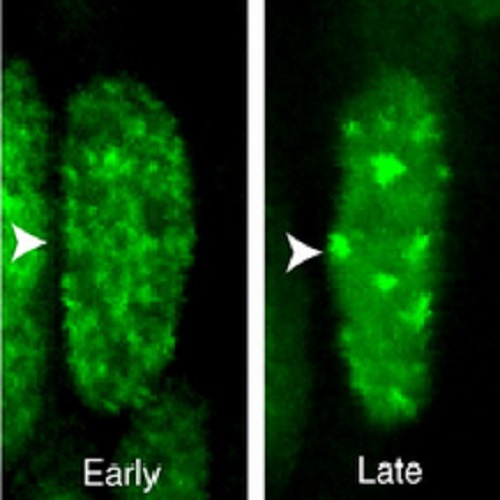Apical migration of nuclei during G2 is a prerequisite for all nuclear motion in zebrafish neuroepithelia.
Nuclei in the proliferative pseudostratified epithelia of vastly different organisms exhibit a characteristic dynamics - the so-called interkinetic nuclear migration (IKNM). Although these movements are thought to be intimately tied to the cell cycle, little is known about the relationship between IKNM and distinct phases of the cell cycle and the role that this association plays in ensuring balanced proliferation and subsequent differentiation. Here, we perform a quantitative analysis of modes of nuclear migration during the cell cycle using a marker that enables the first unequivocal differentiation of all four phases in proliferating neuroepithelial cells in vivo. In zebrafish neuroepithelia, nuclei spend the majority of the cell cycle in S phase, less time in G1, with G2 and M being noticeably shorter still in comparison. Correlating cell cycle phases with nuclear movements shows that IKNM comprises rapid apical nuclear migration during G2 phase and stochastic nuclear motion during G1 and S phases. The rapid apical migration coincides with the onset of G2, during which we find basal actomyosin accumulation. Inhibiting the transition from G2 to M phase induces a complete stalling of nuclei, indicating that IKNM and cell cycle continuation cannot be uncoupled and that progression from G2 to M is a prerequisite for rapid apical migration. Taken together, these results suggest that IKNM involves an actomyosin-driven contraction of cytoplasm basal to the nucleus during G2, and that the stochastic nuclear movements observed in other phases arise passively due to apical migration in neighboring cells.

- Development 2011 Nov;138(22):5003-13
- 2011
- Developmental Biology
- 22028032
- PubMed
Enabled by:
